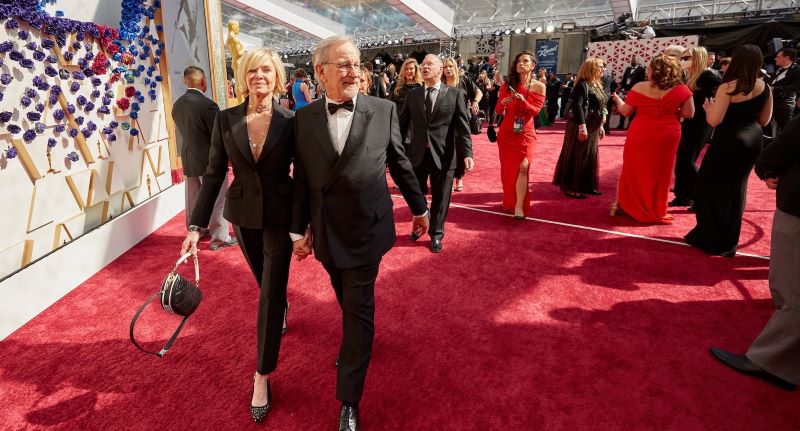
The Hollywood organization that confers the Oscars was founded in 1927 with strikingly different ambitions than the Academy of Motion Picture Arts and Sciences (AMPAS) that the world knows today. “The Academy and the Awards” book by Bruce Davis details Oscar’s little-known history going back nearly a century.

The Academy Awards — Oscar honors — were not a high priority and certainly not thought out, writes Davis, who is an AMPAS (also referred to as the Academy) insider; Davis worked for 20 years as the organization’s executive director.
In the first years of the Academy Awards, talent could be honored for multiple films. For the second Academy Awards for the 1928/29 year, Janet Gaynor was nominated for acting in three movies, not the one-movie awards of today. She had won for one of those films the prior year. “There was no explicit rule yet that prevented a picture from competing in two separate (Oscar) years,” says the book.
In another example of a different thrust, producers are a bedrock today of the Academy and Hollywood, but in the 1930s serious consideration was given to expelling them from membership. The reason? They were employers, particularly when producers began cutting salaries in the Great Depression. In 1938, then Academy president Frank Capra — the celebrated film director — actually demanded producers resign. “We can’t get anything but opposition (from talent) to the Academy as long as producers are members,” the book quotes Capra as explaining.
Interestingly, the Academy’s highest award for career achievement is the memory of Irving Thalberg — the nod named after the popular producer and MGM studio executive who died too young in 1936.
AMPAS endured constant near-death experiences and chronic money woes in its first decades. The organization was founded on the eve of the birth of “taking pictures” at the end of the silent-film era with the aim of raising the prestige of then rag-tag Hollywood. The movie industry gave off a carnival barker vibe, despite its economic success.
Among its off-target focus its early days, AMPAS was pushed to be a sort of labor union by some insiders. The book suggests that was a hope of studio chiefs and producers, figuring a multi-discipline organization with artistic ambitions would defuse job-specific, assertive unions forming in the 1920s to 1940s. The labor union thrust fizzled by the 1940s though it had been in evidence when AMPAS mounted labor arbitration services in its earliest years.
About the only consistent ideal is a desire to celebrate art over commerce. The worlds “arts” and “sciences” in the AMPAS name are aptly chosen. Regarding the latter, the organization honors technical achievements today and in its early years was an important forum for setting industry tech standards. Another constant is membership comes from invitation-only. Someone can’t join simply because they might qualify in terms of Hollywood resume.
While searching for an identity, AMPAS did not make its Academy Awards a top priority and was surprised when second iteration got big publicity and growing prestige
Reliant in early days on subsidies from major studios, a blowup occurred in 1948 when British film “Hamlet” won best picture and studios reacted by temporarily pulling financial support. In hindsight, that was short-sighted because even if some Oscars when to non-American films, the Hollywood studios got the bulk of the awards and an enormous marketing boost for its winning and nominated films
Two recurring conflicting themes resonate in the book. The Academy governors resisted commercial associations. And the other is that the Academy was perpetually financially broke, until the 1950s when it loosened up on licensing the Oscars telecast rights.
By 1954, faced with money woes on the one hand and TV outlets banging on the door begging to pay for Oscars telecast rights, the governors relented by embracing a TV in a big way. “The academy had learned a lesson that it has remember faithfully to this day; there would be no bleed-over between the commercials and the proceedings of the Academy; no products or pitchmen onstage; no banter between sales folks and show participants; and no nominees, performers or presenters appearing in the show’s ad spots,” says the book.
No more would the Academy licensed consumer products — there was an Academy Awards-licensed Bulova wrist-watch in 1950 (some examples can be found today on eBay), and no more overt tie-ins like the Oldsmobile car onstage hogging the Oscars limelight during the awards ceremony the year before. “A gleaming Oldsmobile was surrounded by a live troupe of dancers demonstrating their spirited admiration for the car,” says the book of that Oscar telecast scene — never to be repeated!
Over the years, suggestions to overhaul the Oscars ceremony have been made internally and externally, particularly to prerecord some segments, present some awards off camera and cut some awards from the live telecast to shorten the presentation. Davis believes those ideas are off-target because “the Oscars were news, and news that was delivered to the millions of TV watches at the same moment that it was delivered to the audience in the theater and to the artists who’d won the statuettes … the excitement was fueled by the evening-long series of revelations” of winners in each category.
Hollywood is famous for resisting technological change that ultimately proves beneficial. And the AMPAS history has many examples.
After the first year of the Academy Awards in 1929, the organization pondered creating separate parallel awards for talkie films — which then were new as the breakthrough “The Jazz Singer” movie premiered in 1927. The assumption is the incumbent silent films would continue to draw audiences, but in fact experienced sudden-death-syndrome at the hand of talkies.
In 1947, a producers association sent a strongly worded letter to AMPAS urging it to drop expanding radio and TV coverage of the Oscars awards, on theory that radio was an enemy that siphoned audiences away from cinema. The academy was forward-looking and rejected the suggestion, which came at some risk because producers funded some AMPAS projects, particularly in the motion-picture technology arena.
Truncated live radio coverage of the Oscars had began in 1932. While AMPAS was cash-strapped in its early years, the organization did not seriously licensing Oscar telecast rights, feeling that would sully the artistic aspect.
Further, AMPAS didn’t think of trademarking Academy Awards in its early years. So, in 1946, a movie theater operator did, meaning the Academy didn’t own the common phrase to describe its Oscars. The book attributes the oversight to AMPAS governors shunning commercialism. Eventually, the Academy won legal battles.
The book (full title “The Academy and the Awards: The Coming of Age of Oscar and the Academy of Motion Picture Arts and Sciences”) is very well written. The language is straightforward and the narration is sprinkled with metaphors that lighten up the subject matter and sufficient explanation to make the characters real. When the Oscar nominations were staged as a TV event with celebrities, the book explains a less-formal-than-awards-night atmosphere in a breezy passage: “No tuxes were in evidence, but each venue offered a passable supply of recognizable faces.”
For fleshing out real-life characters, Margaret Herrick — an AMPAS office worker who rose to become dynamic and widely admired Academy staff head in her career spanning 1943-71 — the text reveals that she endured two unhappy marriages. The first was to a senior Academy staffer, who left her for a Russian woman in World War II while he was station in Washington D.C.
Today, the Academy’s world-renowned library and film history archive is named for Margaret Herrick. “The gesture — which did not involve a donor [providing cash] — may have been evidence of the governors’ lack of familiarity with fundraising strategies,” Davis notes in one of many wry observations.

The text often put me in the moment — whether Hollywood in the 1930s or the 1960s. No co-writer or “as told to” credit is listed and so Davis gets kudos for wordsmithing — surprising because he worked as an executive not journalist or writer. In the text, tangential events such as the congressional hunt for communists in Hollywood in the 1950s are nicely explained in passing for context.
Fleshing the early history is difficult from just organization records, but Davis presents an amazingly-full picture of each era of the Academy. The modern era presentation seems more condensed than early history. Current travails are recent declines in TV audiences for the awards that rattles AMPAS, as does the video streaming revolution.
But it’s those early days richly chronicled in the book that set the stage for the modern era. Decisions made in the early 1950s and again in the early 1960s shaped the modern Academy Awards TV telecast, which is the organization’s signature event and cash cow. “The Academy and the Awards” is also a warts-and-all narration that is candid about organizational and executive failings, at times naming names.
Besides official archive, Davis pieces together events from his own speculation, contemporary news accounts (those ever-present “trade” newspapers) and memoir material, in particular, the diary of man-about-town Charlie Brackett. Elected head of the Academy from 1949 to 1955, Brackett was an Oscar-winning screenwriter (“Sunset Boulevard” and “The Lost Weekend”) who chronicled events as they happened.
Leave a Reply